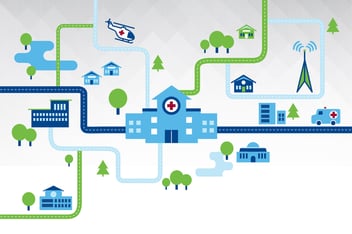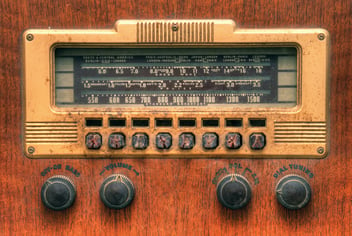We previously discussed why an Indoor Positioning System (IPS) is such a nice thing to have. This of course begs the question—why isn’t it everywhere? Well, a successful IPS involves some unique challenges that cause many solutions to falter. So let’s take a deeper look into some of the main culprits behind what can make indoors messy for determining location and stand in the way of a great hospital wayfinding experience.
The Mess
Physical Interference: Buildings are full of stuff. This stuff can be walls, equipment, or people just living their lives. Even your own body can be an unwitting enemy to a good location fix. The more unpredictable and dynamic the interference, the more difficult it becomes to engineer around.
Many positioning systems rely on signal technology to estimate distance. Any kind of interference has dramatic effects on the accuracy of these systems, which greatly limits what technology and techniques can be best leveraged for indoor location awareness.
Noise: Facilities are home to different pieces of equipment putting out all kinds of different energy. This can cause tools as simple as a compass to become unreliable. For the compass, it’s due to many different potential magnetic sources, but each tool has its own kryptonite. Similar to physical interference, this can limit the signal technologies and sensors that can be effectively used to determine location.
Dedicated Technology: GPS location is determined based on the signal technology of several dozen satellites in earth’s medium orbit. Similarly (but on a much smaller scale), a successful IPS implementation is achieved through a combination of dedicated infrastructure and consumer technologies.
There are a variety of different approaches that we’ll investigate in future articles, but each one introduces different complexities. Some fundamental considerations here are scalability, cost, accuracy, maintenance, security, and privacy. Not to mention their ability to overcome the other hurdles discussed in this article.
Structures are Complex: Most people are familiar with wayfinding for driving instructions. If we think about a road, it’s a fairly simple concept. It’s flat. It has a name. It connects to other roads in a way that makes sense.
Buildings, by contrast, have a lot more going on. They’re multilevel. Hallways are unnamed and often lack distinguishable characteristics. Buildings can connect together in strange ways. A deeper level of understanding is needed about the structure of the facility in order to properly locate a device in an actionable way. This may be less of an issue in situations like retail where structures and layouts are consistent and predictable. For hospitals, however, we’ve learned that each facility offers its own unique challenges.
Quality: In most cases, indoor location needs to be very accurate to be useful. If GPS misses by twenty feet, it’s still likely on the same street. Not a big deal. When indoors, the location calculated might be in a totally different room or hallway. When a user is actively tracking their location, it’s absolutely critical to quickly locate their current position and follow them as they move. If the user loses confidence in the system, they likely won’t use the application again.
Context is Key: When you’re driving to a destination, your wayfinding app isn’t very concerned with why you’re going from point A to point B. But if you’re inside a building, it’s for a purpose. In hospitals, you’re either seeking care, visiting or accompanying a patient, or helping to operate the facility. Knowing why someone is there is key to knowing how they should best move around a building. Patients need to check-in, visitors need to register, staff can access doors and routes closed off to the general public. Without that additional context, the location data by itself is kind of lame.
Now that you understand some of the issues, you can see why solving this problem is more complicated than it seems. You’re probably wondering how to solve these problems. Those answers are coming in our next post. So stay tuned!


